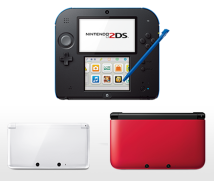5. ''What Can You Tell with Gloves On?!''
The Nintendo 3DS system has lots of new features.
Yes. Where the top layer looks sort of transparent, we’re using something new, an anti-fingerprint UV coating.
It’s the first time we’ve treated a system so fingerprints won’t stand out, while at the same time preserving surface strength and a lustrous texture.
If you touch it, you’ll still leave a fingerprint, but the coating makes it less prone to fingerprints compared to conventional products and it’s easier to remove them.
Right. If you wipe it with a cloth, they come right off.
And we wanted to create a new impression when you open the Nintendo 3DS system, so we used a screen cover for the upper screen that extends across the entire upper surface.
The Nintendo DS and Nintendo DSi systems only had a clear cover over the LCD.
The Nintendo 3DS system’s upper LCD is wide. We really wanted the 3D screen to look good, so we adopted a full-surface screen cover and made the base colour black.
Did you decide on black at the very start?
Yes. When I first saw the demo for the 3D LCD, it made quite an impression. I talked with Miyatake-san about how black would make 3D images feel stronger. When the area around the screen is black, it feels like the graphics are really leaping out. You can really focus on the screen that way, so we never budged from that.
And there are more lights this time.
There are six, which is the most ever.
The Nintendo DSi system had four. From the viewpoint of design, what was involved in laying them all out?
The lights on the Nintendo DS Lite and Nintendo DSi systems were lined up on the hinge. But there are six this time, so we put the power light near the POWER Button and the 3D light near the 3D depth slider.
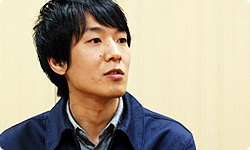
For the users, that’s probably easier in some ways than having them all lined up in one place.
Yes. Since there were more lights, we made them easier to understand. The wireless light is next to the wireless switch. We laid them out so you can naturally tell what they mean just as you use the system. The notification light tells you when the system’s distinctive features StreetPass and SpotPass have been active. It’s on the hinge so it is easily noticeable when shining.
Another new feature is the analogue Circle Pad above the +Control Pad. With regard to its operability, we tried countless possibilities before settling on the final specs.
Even when the hardware team decided on specifications, once the software teams used it, they would have new demands.
Right. (laughs)
And that was later in development! (laughs)
Those of you making it might think a particular spring strength is good, but the software developers are concerned with how much of an effect moving it a certain amount has during gameplay.
The materials for the Circle Pad have changed since the announcement at E3. We used double moulding, and the parts where your fingers touch are rubbery.
When we announced it at E3, it was a single material, but later we changed the surface material and made it two.
Right. We considered resins with different textures and more pad shapes than you can count. It’s sort of the face of the Nintendo 3DS system, so we reflected the opinions of as many people as we could, including software developers, and I think it turned out to have a very nice grip.
Since the subject of E3 has come up, I’d like to ask something. Before E3, you said you couldn’t guarantee that we could exhibit it, but once you gave it a shot, you prepared 200 units of Nintendo 3DS. How were you able to do that?
The main reason is how hard everyone on the staff worked, but as we discussed earlier, the design took a long time to come together, so to be honest, I didn’t think we would be in time. But I scared (Kenichi) Sugino-san11 a little, saying that if it kept dragging on, I couldn’t guarantee we could show it at E3. Meanwhile, I cracked the whip at the design team who were working hands-on at it. (laughs) 11Kenichi Sugino: Research & Engineering Department, Nintendo Co., Ltd. For details, see Iwata Asks: Nintendo 3DS
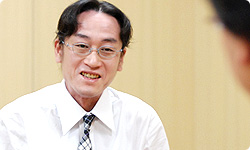
Oh, is that so? (laughs)
Every day I would say, “If you don’t get this done by this date, we definitely won’t make it in time for E3!”
Usually when you make new hardware, you’re planning the schedule on a weekly or monthly basis at that point, but this time we were counting every day.
To be counting your days at that point is quite something.
That’s what a tight spot we were in.
What was it like to be at the receiving end of the whip, Goto-san? (laughs)
We didn’t have any leeway. It was like I was moving purely on a sense of commitment. This was my first time to be central to design, so I wanted to show it at E3 no matter what. It’s like it was that feeling alone that carried me through.
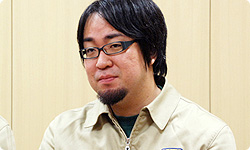
And the effort put in by (Kazuo) Yoneyama-san12 in China was amazing. He went back and forth more than anyone else. 12Kazuo Yoneyama: Research & Engineering Department, Nintendo Co., Ltd.
Yoneyama-san is a veteran developer who previously participated in Iwata Asks: Nintendo DSi XL. He really threw himself into this project, as well.
Yeah. If it weren’t for Yoneyama-san, I don’t think we could have shown real machines at E3.
We faced a number of difficult problems this time, but he doesn’t give up easily in situations like that, saying, “I’m sure there’s a way.”
He keeps going and says, “I’m sure we can do it.”
Yes. When you’d usually say, “We can’t do that,” he says, “If that’s what the designers say, then we have to do it,” and then he plugs away at it until we actually do it.
But he still pays a lot of attention to detail.
That’s right. When it came to things like the operability and feeling of the Circle Pad mentioned earlier, in particular the way the buttons felt, he always put himself in the players’ shoes and paid the strictest attention.
When we finished the first prototype for exhibiting at E3, the buttons didn’t feel that great. I heard that Yoneyama-san called down thunder and lightning, saying, “Are you going to let our customers touch this?!” (laughs)
Yeah, he did. (laughs)
That happened in China, too. When you do line checks for mass production, you have to wear gloves so you don’t get fingerprints on the product. But when Akai-san was checking the buttons with gloves on, Yoneyama-san got angry at him, saying, “What can you tell with gloves on?!”
(laughs)
Lightning struck the manufacturing plant in China, huh? (laughs) I do suppose you can’t tell much about how the buttons feel if you’re wearing gloves.
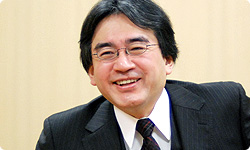
I don’t mean to justify myself, but there was an earlier event leading up to that. Yoneyama-san himself was wearing gloves once during a check, and (Nobuo) Nagai-san13, General Manager of the Manufacturing Division, just happened to be paying a visit, and he said to Yoneyama-san, “You can’t tell how it feels if you’re wearing gloves!” 13Nobuo Nagai: Senior Managing Director and Representative Director, Nintendo Co., Ltd. As General Manager of the Manufacturing Division he oversees the Uji Plant.
(laughs)
So that’s where it began! (laughs) Ever since, we’ve been under orders to take off our gloves when checking the buttons.
So when new personnel come along, you all tell them to take off their gloves for such checks. (laughs)
Yeah. (laughs)
In any case, Yoneyama-san is a powerhouse!
He’s always the first one to arrive and he can’t rest until he’s checked something himself. I’m always amazed at his vigour.
